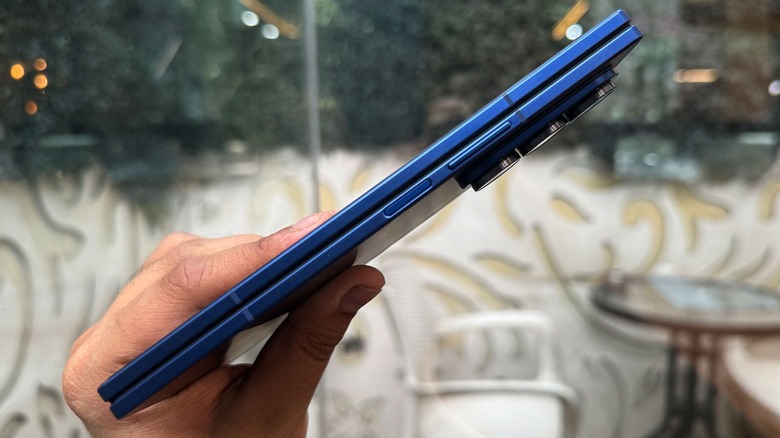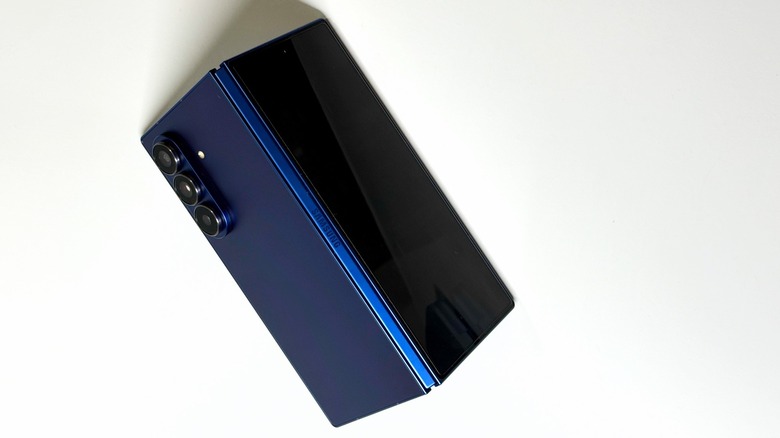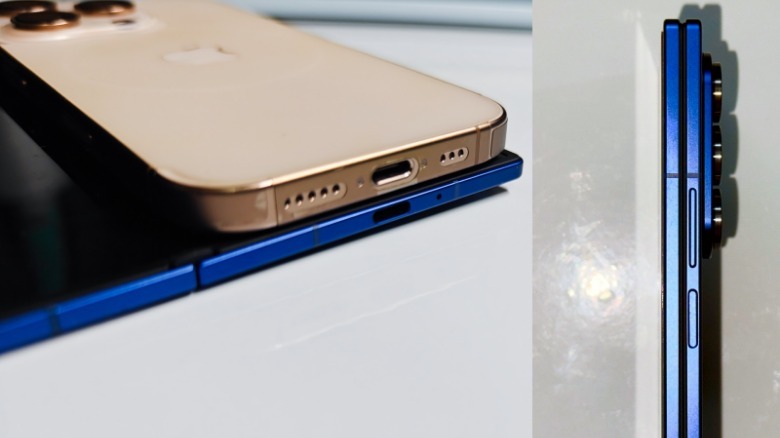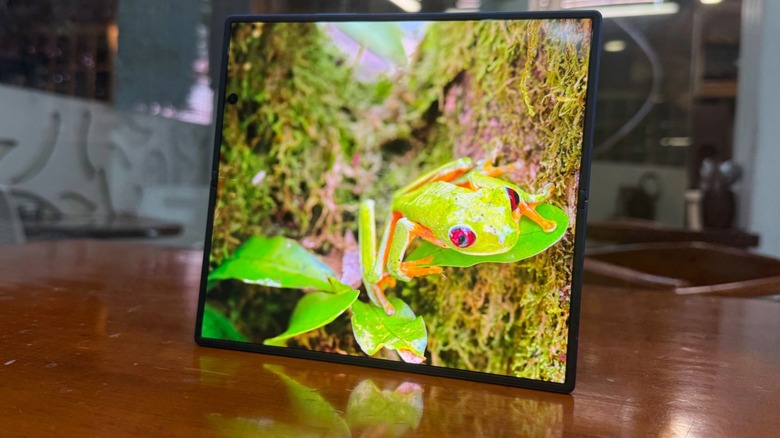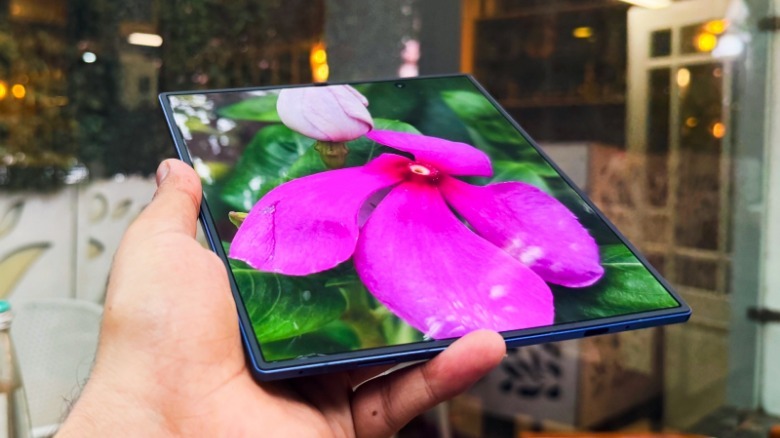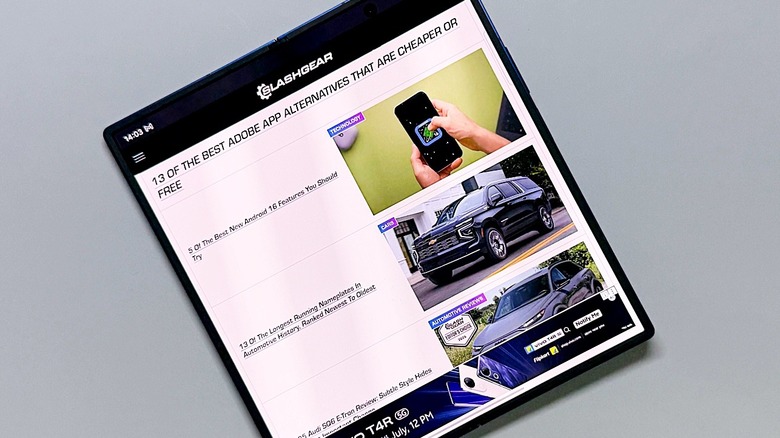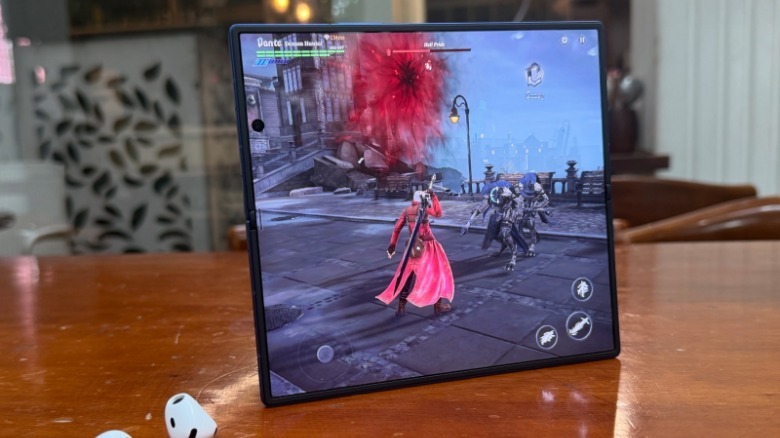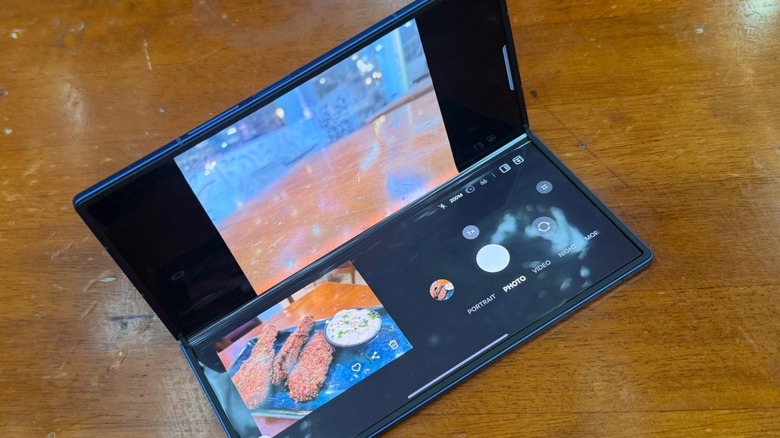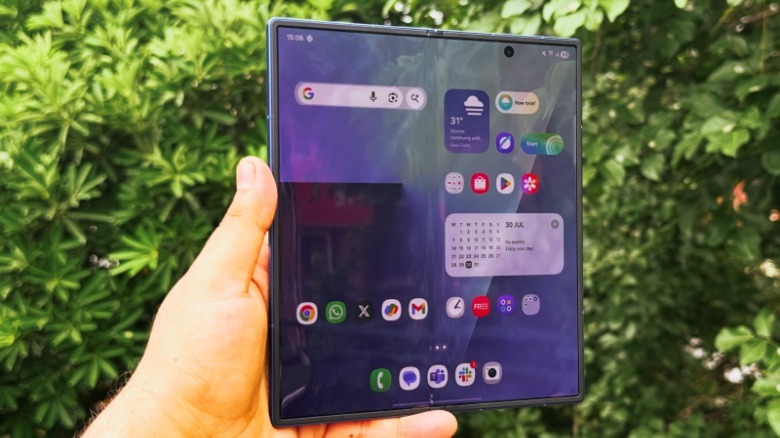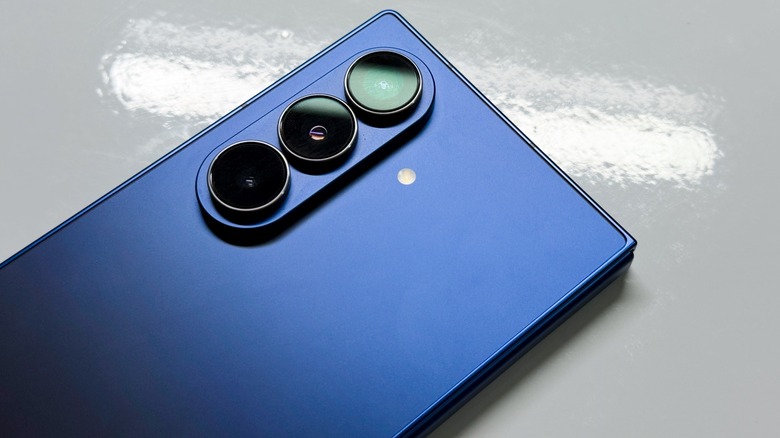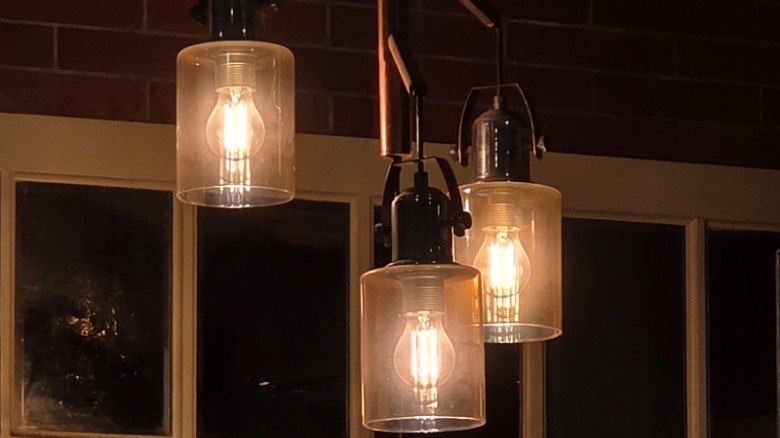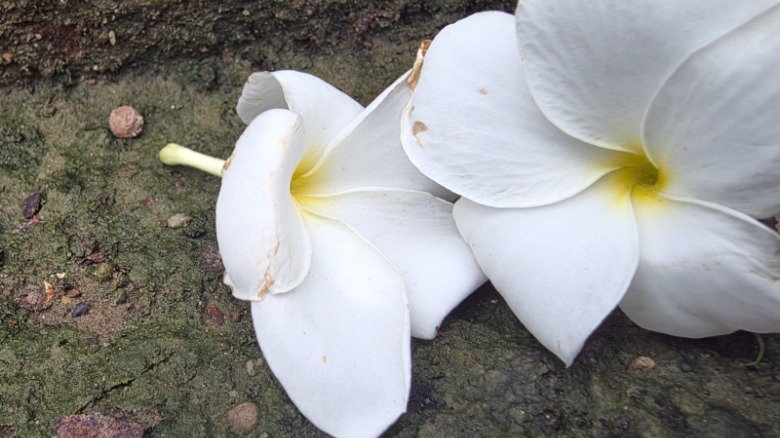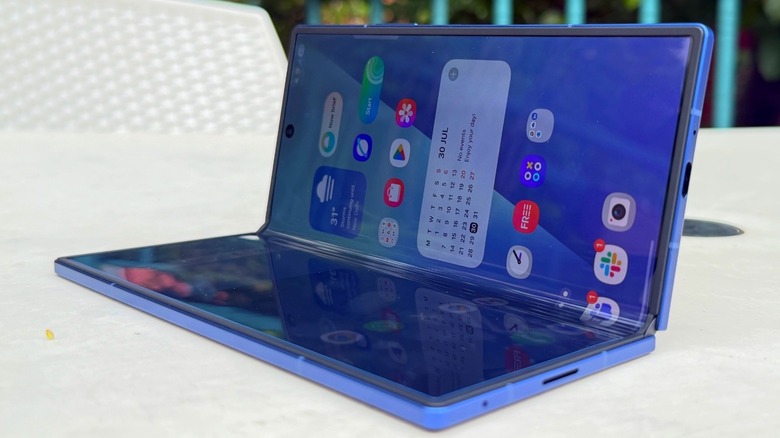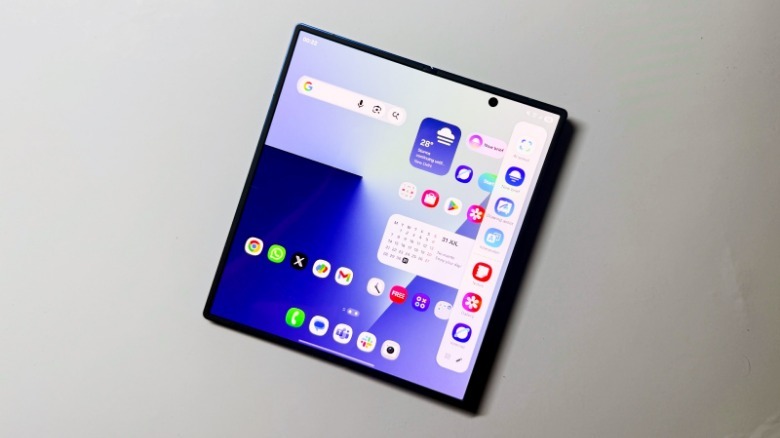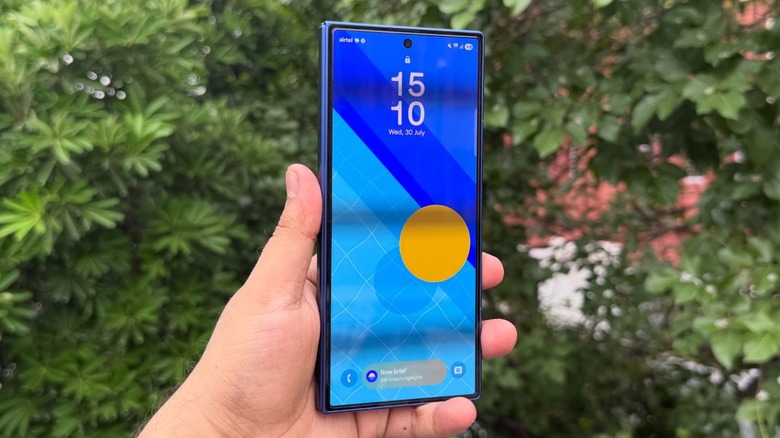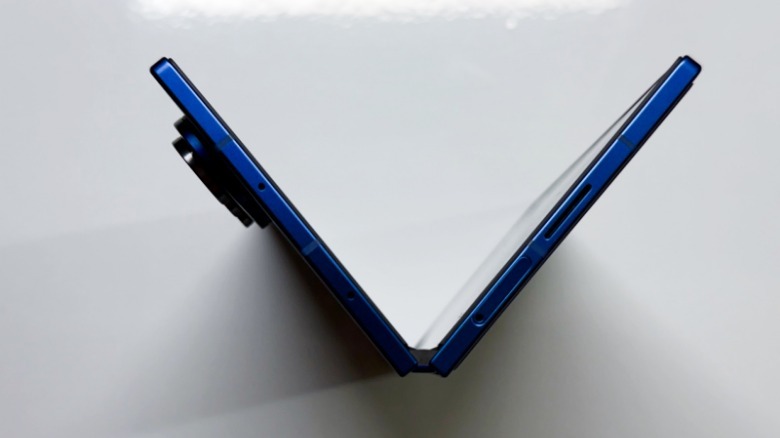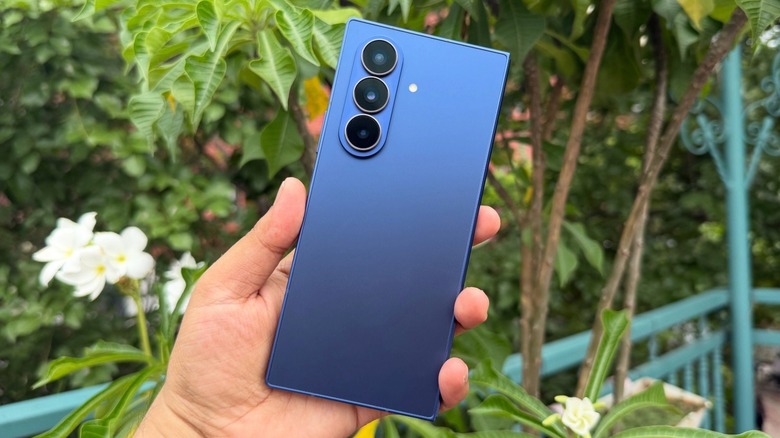Samsung Galaxy Z Fold 7 Review: Folding In All The Right Ingredients
We may receive a commission on purchases made from links.
The year 2025 is somewhat special for Samsung, it seems. It reclaimed the top spot for world's slimmest flagship phone. It continued its stellar streak with a camera-centric powerhouse. And after losing the foldable battle for a few years, it finally returns to form with the Galaxy Z Fold 7. It's the boldest phone Samsung has made in years, one with as much aesthetic charm as practical perks.
The Galaxy Z Fold 7 puts foldable phones — quite literally — in the same weight and waistline class as an average smartphone. And yet, it offers the functional convenience of an 8-inch tablet hiding in plain sight. The asking price of two thousand dollars is still steep, but this time around, Samsung has gone above and beyond to justify the premium you pay for it.
It's slimmer, lighter, and more importantly, sturdier than ever. Moreover, it brings a seriously upgraded imaging hardware and a refined software to go with the foldable renaissance at Samsung. I pushed it as my daily driver, replacing the heavy-hitter that is the Google Pixel 9 Pro, and now I don't want to part ways with it. If you're in two minds regarding the Galaxy Z Fold 7's worth, here's a detailed rundown of its strengths and pitfalls.
Design and build
If I were to name the aesthetics of this phone, I'd say it's sharp and suave. The whole package is sharp, blocky, and astoundingly clean. It's also shockingly thin by smartphone standards, foldable or otherwise. In the unfolded state, the Galaxy Z Fold 7's waistline is just 4.2 millimeters, and in its folded form, it's barely thicker (8.9 vs 8.2 millimeters) than the iPhone 16 Pro. Interestingly, it's also lighter than the iPhone 16 Pro Max.
In a nutshell, if you've been waiting for foldable phones to look and feel "normal," your wait ends here. To Samsung's credit, the construction is solid. The build is entirely glass and armored aluminum, with subtly rounded edges and corners. I was initially worried that the sharp lines would dig into the palms, but thankfully, that's not the case.
I have the blue color option for review, which looks stunning. It's the best color I've seen on a Samsung phone, since the lovely Green Emerald and Blue Topaz on the Galaxy S6 series back in 2015. Thankfully, the subtle frosted finish isn't a fingerprint magnet and does a decent job at resisting smudges. Over, this is as good as foldable phone engineering can get.
There are a few minor, but unavoidable, pitfalls, too. The side-mounted fingerprint is pretty fast and accurate, but it's too thin. Moreover, due to the large camera island at the back, the phone wobbles on a flat surface. A lot, if I might say.
Display
The Galaxy Z Fold 7 offers a 6.5-inch display on the front with a tall 21:9 aspect ratio, and an 8-inch inner foldable panel. Both screens are AMOLED type, and offer a 120Hz dynamically adjusting refresh rate. I love the narrow display approach, as it makes the phone a lot easier to hold. As far as quality goes, both of them are stunning. You're promised rich colors, wide viewing angles, and plenty of sharpness for watching hi-res videos.
Samsung has also improved the crease situation. Most of the time, you won't even notice it. Only when held at an oblique angle and lower brightness levels can you see the outline of the vertical ridge. More importantly, it's a lot more durable than its predecessor. Samsung says the flexible OLED panel on the Galaxy Z Fold 7 can survive 500,000 fold cycles, up from the 200,000 fold test rating for the Galaxy Z Fold 6.
Even if you open and close the panel a hundred times each day, it should technically survive ten years' worth of usage. Underneath all that upgrade is multi-layered strengthened glass fused with plastic material, resulting in a 50% thicker Ultra Thin Glass (UTG) layer.
Samsung says the stress recovery of the foldable screen is four times higher, and it is also more effective at shock distribution. The biggest concern with foldable panels is the screen's longevity, and with the Galaxy Z Fold 7, Samsung delivered a double-whammy in terms of quality as well as resilience.
Performance
The Galaxy Z Fold 7 comes equipped with what Samsung markets as Qualcomm Snapdragon 8 Elite for Galaxy silicon. The company says it has been customized specifically for the Galaxy phones to deliver an added dose of performance, especially in ray-traced games and experiences where Vulkan graphics kick into action. Technicalities aside, it's the fastest silicon you can find in the Android ecosystem.
Whatever you throw at it, the phone can handle it with ease. Video capture, playing games, or using generative AI tricks like removing a person from a photo, everything worked smoothly. Now, let's talk numbers. Samsung's latest foldable beat the mighty iPhone 16 Pro Max on Geekbench's multi-core benchmark, but lagged behind at single-core (a 14% margin) and GPU test run, where the Apple silicon proved to be dramatically faster.
Now, the Adreno GPU aboard the Galaxy Z Fold 7 isn't weak. Far from it. You just have to temper your expectations a bit, and once again, space constraints are to blame. I had a trouble-free time playing games such as "Devil May Cry," "Diablo Immortal," "Genshin Impact," and "Wuthering Waves" at the best possible settings.
In games that push best at 60fps, the average output is around 55 fps, while heating is localized to the area near the camera lens. To my surprise, it ran cooler than expected after running a 3DMark stress test, though the raw output was a bit of a mixed bag, owing to factors beyond Samsung's control.
Hits and hiccups
After running the non-raytraced 3DMark Wildlife Extreme Stress Test, the Galaxy Z Fold 7 returned a stability score of 64.3%, which is not surprising. I got similar stability scores after running the 3DMark Steel Nomad test. The Snapdragon 8 Elite has consistently suffered from poor frame rate stability in every phone I have tested so far. For comparison, the much older (and less powerful) Snapdragon 8s Gen 3 easily scored above 83% on the same prolonged synthetic test.
On the positive side, the performance drop stabilizes after the early drop, and by the time the onboard resources get a feel of the workflow, the CPU and GPU output become relatively stable, though not at the peak. Thankfully, the battery draw is even, and the temperature levels never exceeded the 104 degrees Fahrenheit mark, after games and intensive benchmark tests.
I was expecting the Galaxy Z Fold 7 to perform worse, given its extremely thin chassis, but it fared well. But at the same time, it also warms up quicker than an average slab-style phone during activities such as video capture. In a nutshell, the Galaxy Z Fold 7 can perform at peak levels, but only for short bursts. After that, throttling kicks into action in order to keep things from getting toasty. For an average user, it won't be much of a problem, and they will only run into performance bottlenecks sporadically, if at all.
Camera
The Galaxy Z Fold 7 also dials up the notch for imaging prowess. The main snapper has been upgraded to a 200-megapixel sensor, which can also take pixel-binned shots at 12-megapixel and 50-megapixel resolutions. It sits alongside a 12-megapixel ultrawide camera and a 10-megapixel optically-stabilized telephoto camera with 3x optical zoom output.
The main snapper takes sharp pictures with a pleasant level of color saturation, surface details, and sharpness. By the way, the main camera also serves as the world's most powerful selfie snapper when the phone is unfolded and the cover screen is used as the viewfinder.
I never thought I would click 200-megapixel selfies, but here we are, and they simply look stunning. The ultrawide-angle camera also clicks decent pictures.
It avoids edge distortions, but the images are slightly softer compared to the main snapper, the colors are slightly subdued, and the exposure can be erratic at times. It, however, can click some stunning close-range shots. The macro samples retain the true color tone and plenty of details, without any focus woes.
The 3x zoom camera maintains the vibrant tone of the main snapper, but it struggles with noise suppression. Also, as you go beyond the native optical zoom range, artificial surface smoothening and sharpening kick into action. The results are not terrible, but it's easy to spot the imperfections. Portrait shots turned out lovely with a nice depth and accurate subject separation. Also, Samsung's execution of photographic styles is noticeably better than the iPhone 16 Pro pair.
Software And User Experience
This is the first phone to run Samsung's Android 16-based One UI 8 software. It's not a massive lift in terms of looks, but it adds a handful of meaningful features, built atop a hefty serving of AI-powered functionalities. In my opinion, this is the most feature-rich Android skin out there, even though I am not a huge fan of the design language.
I love the side panel system, where you can quickly access frequently-used tools and apps. The Galaxy AI bundle offers a whole bunch of meaningful features, such as live interpreter mode, side-by-side preview and edited look for media, audio eraser for removing noise from images, and Circle to Search, which now works even in video games.
The whole Gemini AI stack you find on the Google Pixel phones is also served as part of the One UI 8 package. A few of the native apps are also worth an honorable mention. The My Files app now lets you sort files based on the app they were downloaded from. The Quick Share has also been upgraded, making it far easier to send and receive files.
The Now Bar and Now Brief features keep you updated with everything from reminders to upcoming events, in a rather understated fashion. Overall, if you're looking for a software interface that keeps surprising you with useful feature discovery, One UI 8 would be it. Samsung has also assured that it will serve annual Android software updates for at least seven years, so that's another neat perk.
Battery
There is both good and bad news here. The Galaxy Z Fold 7 comes equipped with a 4,400 mAh battery, which is noticeably smaller than rival foldable phones. The 25W wired charging pace is also on the slower side. I had my apprehensions with the on-paper specs, especially considering the amount you pay for this phone.
The power uptake, however, is more frugal than I expected. During the test spell, I never ran into a day where I had to run for a charging point, despite capturing plenty of pictures, playing games for about an hour, and catching up on a few episodes of "Brooklyn Nine-Nine."
I engaged with Docs and Ghost for my personal blog more frequently on the 8-inch inner display than on an average slab-type smartphone. Despite that, the Galaxy Z Fold managed to last about 14-16 hours per charge. It's nowhere near phones such as the Galaxy S25 Ultra, or Chinese smartphones such as the Oppo Find X8 Ultra.
But for a device with two 120Hz OLED panels, the 4,400mAh battery does a satisfactory job of keeping them lit for an average day of uncompromised usage. I wish Samsung had upped the pace of charging on this one, or bundled a charger in the retail package. If it comes as any consolation, the phone supports reverse wireless charging. You can juice up accessories like earbuds or another phone by simply placing them over the Galaxy Z Fold 7's rear shell.
Verdict
For the past few years, it felt like Samsung had lost its competitive edge in the foldable phone segment, letting Chinese brands like Honor and Oppo hog all the innovation limelight. With the Galaxy Z Fold 7, Samsung has delivered a solid knockout punch. It's not overwhelmingly the best foldable phone pound for pound, but it's pretty close to the summit. For the shoppers in the Western markets, including the US, there simply isn't a better choice.
It's an exquisite piece of hardware that puts Samsung back in the game, and with plenty of substance to vouch for it. Samsung's software is rich in meaningful features, and it doesn't disappoint when it comes to raw performance chops, display quality, or camera prowess. The software update cycle is the most generous in the Android ecosystem, and the underlying durability concerns of foldable hardware have also been addressed to a large extent.
Starting at $1,999.99 in Samsung's store on Amazon, the Galaxy Z Fold 7 is not an easy recommendation. But if you want the best from a foldable phone, and wish to push the envelope functionally, there is no better option out there. It makes foldables feel like a normal phone in hand, at last, without losing the charm of a dual-display chameleon device. If you can afford it, you should get it. Just remember to spend a few extra bucks and get a slim case to slap on top of this svelte charmer.
